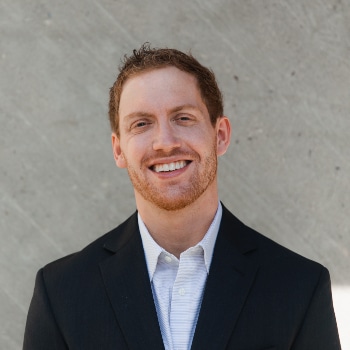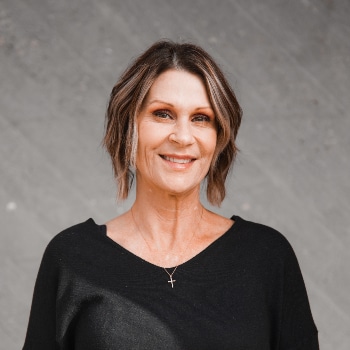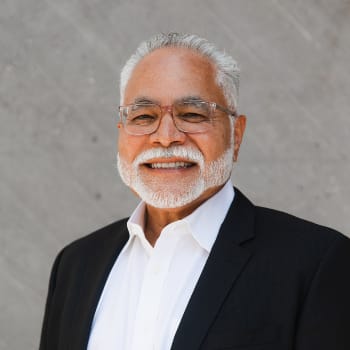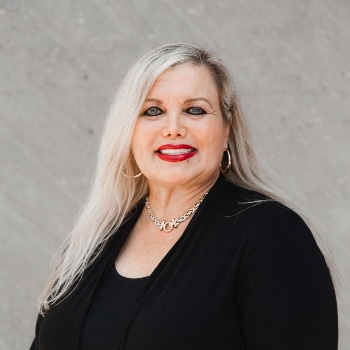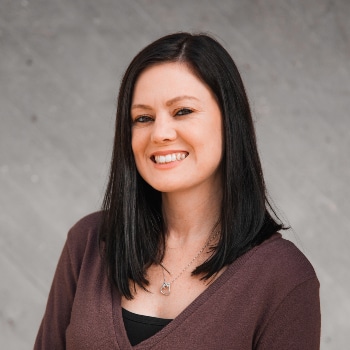OCD Quiz & Guide
OCD—short for obsessive-compulsive disorder—is a term that is often used informally or causally. Many people use the term to describe people who prefer a tidy home or those who exhibit high standards of cleanliness.
Everyone experiences occasional worries. But for individuals struggling with OCD, ongoing concerns and anxiety can take over, in ways that seriously disrupt their daily lives. Approximately 2% of U.S. citizens are diagnosed with obsessive-compulsive disorder[1].
This casual use of the term can mask the fact that obsessive-compulsive disorder is a serious mental health condition. In fact, OCD often requires professional support to resolve.
Obsessive-Compulsive Disorder (OCD) Quiz
Your results of this self-assessment are not a replacement for a professional diagnosis, nor is this test meant to be a proper diagnostic tool. Please use it only for educational purposes and talk to your doctor about all your symptoms.
What Is Obsessive-Compulsive Disorder (OCD)?
Obsessive-compulsive disorder (OCD) is a mental health condition characterized by uncontrollable, repetitive thoughts (obsessions) and behaviors (compulsions). The person with OCD will feel compelled to act on these feelings. People with OCD do this even when they know that they are being irrational while doing so [2].
It is estimated that the lifetime prevalence of OCD among United States adults is 2.3% [3].
OCD is typically characterized by high levels of anxiety, fear, and emotional distress. In severe cases, obsessive-compulsive disorder can prevent the individual from being able to function in daily life. It can disrupt relationships, interfere with the capacity to meet responsibilities, and significantly impact the quality of the person’s life.
Everyone has certain habits and preferences—ways of thinking or activities they repeat daily or weekly. This is natural for everyone. But for those struggling with obsessive-compulsive disorder, the thinking patterns have become obsessive, and the habitual activities have become compulsive. Such a person, for instance, may:
- Have thoughts, images, or urges that they feel unable to control—even when they are understood to be irrational or excessive.
- Repeatedly have thoughts or feelings that are experienced as intrusive or unwanted.
- Experience temporary relief (from worry/anxiety) by performing certain behaviors/rituals.
- Feel high levels of discomfort, fear, or disgust about their conviction that things must be done in a certain way.
- Experience disruptions in work, family, or social activities directly related to obsessive thoughts or compulsive behaviors.
Obsessive-compulsive disorder is a serious mental illness that can become debilitating if left untreated.
Who Is at Risk for OCD?
Obsessive-compulsive disorder can affect males and females of any age: children, adolescents, or adults. However, about half the cases, OCD is diagnosed during childhood or adolescence. And the majority of other instances appear in early adulthood. It’s unusual for OCD to occur after age 40 [4].
Risk factors for obsessive-compulsive disorder include a variety of factors. These include having another mental health disorder, having parents or other family members who have struggled with OCD, and trauma.
Individuals with obsessive-compulsive disorder may experience periods during which their symptoms increase or decrease in severity. While the condition may not resolve completely, the symptoms can be effectively managed.
Symptoms of Obsessive-Compulsive Disorder (OCD)
As its name implies, the primary symptoms of OCD are obsessions and compulsions [5].
Most people experience obsessive thoughts and compulsive behaviors occasionally. However, someone struggling with OCD experiences them much more frequently and extensively—an hour or more per day. Obsessive thoughts and compulsive actions are interwoven with anxiety and other emotional distress and often interfere with work, school, family, or social life.
What Is an Obsession?
Obsessions are intrusive thoughts, mental images, or strong impulses to perform specific actions. They are often accompanied by uncomfortable or distressing feelings. While a person may not consciously want these upsetting, distracting thoughts, they can’t prevent them from arising.
Another word for thinking obsessively about a situation, idea, or choice is “rumination.” This sort of rumination—particularly when it’s negative, troubling, or ominous—is a central symptom of OCD.
When an individual is ruminating, they are indulging in their obsessions. They’re spending lots of time thinking about or analyzing the situations they are obsessed with.
While particular obsessions vary widely from one person to the next, some common obsessive symptoms include:
- Fear of contamination by germs, bodily fluids, dirt, or other substances.
- Desire for order, symmetry, or arranging things perfectly.
- Intrusive or taboo thoughts involving sex or religion.
- Aggressive/violent thoughts towards oneself or others.
- Fear of losing or forgetting things.
- Fear of being responsible for a catastrophic event.
- Superstitious beliefs, such as the need to avoid stepping on cracks in a sidewalk.
A person may feel compelled to perform repetitive, compulsive actions in response to these obsessive thoughts.
What is a Compulsion?
Compulsions are repetitive actions that an individual performs to decrease or eliminate obsessive thoughts and feelings. Compulsive behaviors are intended primarily to relieve anxiety rather than to seek pleasure. This distinguishes OCD compulsions from other compulsive behaviors such as gambling, eating, or sex.
For someone with OCD, the urge to perform repetitive behavior is intense. The action occurs frequently, is time-consuming, and may take on a ritualistic quality.
Examples of some of the most common compulsions include:
- Repeatedly checking things, such as checking if the door is locked or the lights are turned off.
- Excessive hand-washing and cleaning.
- Ordering and arranging things in a particular and precise way.
- Compulsive counting or touching of objects.
- Continuously monitoring the body for symptoms of the disease.
- Repeating routine activities, such as getting up from a chair.
What is a Tic Disorder?
A tic disorder may include motor and vocal tics. Motor tics are sudden, brief, and repetitive movements—such as facial grimacing, shoulder shrugging, eye blinking, or head or shoulder jerking. Vocal tics include repetitive throat-clearing, sniffing, grunting, barking, or hissing sounds.
When a person with a tic disorder is in a particularly stressful situation, this can increase the expression of tics. For someone with OCD and a tic disorder, treating the underlying causes of OCD will tend to minimize tics.
How is OCD Diagnosed?
A psychiatrist, psychologist, or counselor will base such a diagnosis on specific symptoms observed or reported by the client. The first is the presence of obsessions and compulsions, which are time-consuming and cause significant emotional distress. These behaviors and thoughts may also disrupt social, occupational, or familial settings.
The mental health professional will also examine whether the OCD symptoms may be explained by something else. For example, a side effect of using a medication or other substance. Or if another health issue better explains the symptoms. If neither of these is the case, then a diagnosis of obsessive-compulsive disorder is likely.
DSM-5 Criteria for Obsessive-Compulsive Disorder
The DSM-5 (Diagnostic and Statistical Manual of Mental Disorders, Fifth Edition) provides clinicians with official definitions and diagnostic criteria for mental disorders.
Obsessive-compulsive disorder was previously categorized as an anxiety disorder. However, in the 5th edition of the Diagnostic and Statistical Manual of Mental Health Disorders, it was reclassified. OCD has been officially reclassified under “Obsessive-Compulsive and Related Disorders.”
The official diagnostic criteria for OCD in the DSM-5 (in an abridged version) are as follows [6][7].
DSM-5 Criteria for Obsessive-Compulsive Disorder
A. Presence of obsessions, compulsions, or both:
Obsessions are defined by:
- Recurrent and persistent thoughts, urges, or impulses that are experienced, at some time during the disturbance, as intrusive and unwanted, and that in most individuals cause marked anxiety or distress.
- The individual attempts to ignore or suppress such thoughts, urges, or images or to neutralize them with some other thought or action (i.e., by performing a compulsion).
Compulsions are defined by:
- Repetitive behaviors (e.g., hand washing, ordering, checking) or mental acts (e.g., praying, counting, repeating words silently) that the individual feels driven to perform in response to an obsession or according to rules that must be applied rigidly.
- The behaviors aim to prevent anxiety or distress or prevent some dreaded event or situation. However, these behaviors are not connected in a realistic way with what they are designed to neutralize or prevent or are excessive.
B. The obsessions or compulsions are time-consuming (e.g., take more than 1 hour per day) or cause clinically significant distress or impairment in social, occupational, or other important areas of functioning.
C. The obsessive-compulsive symptoms are not attributable to the physiological effects of a substance (e.g., a drug of abuse, a medication) or another medical condition.
D. The disturbance is not better explained by the symptoms of another mental disorder.
Various Types of OCD
Obsessive-compulsive disorder affects different people in different ways. The most common types of OCD include the following [8].
1. Fear of Contamination/Mental Contamination
In this type of OCD, the person experiences an obsessive fear of being dirty or contaminated by specific objects or places. This can lead to a compulsive need to clean/wash, for instance:
- Repeatedly cleaning the kitchen or bathroom.
- Excessive hand-washing or toothbrushing.
- Avoiding crowds, door handles, or public telephones.
The fear of mental contamination happens when someone with OCD feels that they have been “treated like dirt” by another person. This leads to compulsive washing or showering to try to wash this mental “dirt” away.
2. Need for Symmetry and Orderliness
In this type of OCD, the individual feels that they must arrange objects in a particular order to avoid discomfort or harm. For instance:
- Organizing clothes in the closet.
- Arranging pictures on a counter or wall.
- Arranging books or CDs on a shelf.
3. Checking/Verifying
In this form of OCD, the person must repeatedly check out an obsessive fear/worry of potential harm or damage. For instance:
- Checking door locks, windows, or alarms.
- Checking appliances and water taps to prevent potential leaks or fires.
- Checking their body for signs of illness.
- Confirming the authenticity of memories.
- Checking valuable items such as purses, wallets, or phones.
4. Rumination & Intrusive Thoughts
In this type of OCD, the individual has repetitive, intrusive thoughts which cause discomfort and distress. Such thoughts are often appalling and horrific. For instance, they may fear that they are a pedophile, even with no evidence to support this.
Alternatively, they may contemplate excessively and indulgently on a specific religious, philosophical, or metaphysical topic. For instance:
- Life after death
- The origin of the universe
- The nature of morality, e.g., "Is everyone basically good?"
5. Hoarding Behavior
In this type of OCD, a person cannot discard worn-out or useless possessions. So, instead, these possessions pile up as they are hoarded.
What Causes Obsessive-Compulsive Disorder?
The exact cause of obsessive-compulsive disorder remains unknown. However, experts now believe biological, genetic, and environmental factors may play a role in its occurrence [3].
Biological/Neurological Causes of OCD
There is growing evidence that OCD has a biological basis. And the search for the causes of obsessive-compulsive disorder is currently focused on the interaction between biological and environmental influences [9].
Specifically, research suggests that OCD involves problems in communication between parts of the brain. These problems with communication may be caused by insufficient levels of certain neurotransmitters such as serotonin or dopamine. Drugs that increase the levels of these chemicals in the brain can help improve OCD symptoms.
Genetic & Environmental Causes of OCD
Having parents or other family members with OCD or experiencing childhood trauma can increase a person’s risk of developing OCD.
Stressful life events may trigger OCD in people with a biological or genetic predisposition to the condition. For instance, many individuals have experienced OCD symptoms within six months of:
- Severe conflict
- Serious illness
- Traumatic brain injury
- Childbirth with complications during pregnancy or delivery
So, it seems likely that environmental conditions interact with biological or genetic factors to determine the overall risk of developing OCD.
Psychiatric Disorders That Co-Occur with OCD
Some people with obsessive-compulsive disorder have other mental health disorders[1], such as:
- Generalized anxiety
- Depression
- Phobias
- Schizophrenia
- Panic disorders
- Post-traumatic stress disorder
- Post-traumatic stress disorderSubstance use disorder
OCD can also occur in people with neurological conditions such as:
- Traumatic brain injury
- Tourette syndrome
- Dementia
- Stroke
How Is Obsessive-Compulsive Disorder (OCD) Treated?
The most common treatments for OCD are psychotherapy and medications—or a combination of the two [9] [10].
The specifics of the treatment will vary from person to person, depending upon their unique circumstances. These circumstances include whether they have a co-occurring conditions such as anxiety, depression, or a substance use disorder.
With such therapy, a person can reduce their OCD symptoms and significantly improve the quality of their life.
The medications most commonly prescribed for OCD are serotonin reuptake inhibitors (SSRIs). And therapeutic modalities that have proven effective in treating OCD include:
- Cognitive Behavioral Therapy (CBT)
- Exposure and Response Prevention (ERP)
- Mindfulness-based Cognitive Therapy (MBCT)
- Obsessive-compulsive Disorder Group Therapy
Anyone who is experiencing OCD symptoms should receive professional care and guidance.
Begin Your Healing Journey
For anyone struggling with the symptoms of obsessive-compulsive disorder, treatment can help manage symptoms of the condition. For those living in Southern California, our preferred providers are an excellent option for receiving therapeutic support.
Please contact us today to learn more about our preferred providers and how they can help.
References & Resources
- National Library of Medicine. (2018, September 1). Obsessive-compulsive disorder. MedlinePlus. Retrieved September 10, 2022, from https://medlineplus.gov/genetics/condition/obsessive-compulsive-disorder/
- American Psychiatric Association. (2020, December). What Is Obsessive-Compulsive Disorder? APA. Retrieved September 13, 2022, from https://www.psychiatry.org/patients-families/ocd/what-is-obsessive-compulsive-disorder
- National Institute of Mental Health. (2019, October). Obsessive-Compulsive Disorder. NIMH. Retrieved September 10, 2022, from https://www.nimh.nih.gov/health/topics/obsessive-compulsive-disorder-ocd/
- International OCD Foundation. (n.d.). Who Gets OCD? IOCDF. Retrieved September 12, 2022, from https://iocdf.org/about-ocd/who-gets/
- International OCD Foundation. (n.d.). What is OCD? IOCDF. Retrieved September 12, 2022, from https://iocdf.org/about-ocd/
- Beyond OCD. (n.d.). Clinical Definition of OCD. Beyond OCD. Retrieved September 10, 2022, from https://beyondocd.org/information-for-individuals/clinical-definition-of-ocd
- Diagnostic and Statistical Manual of Mental Disorders, Fifth Edition, (Copyright 2013). American Psychiatric Association.
- OCD UK. (n.d.). Types of OCD. OCDUK. Retrieved September 13, 2022, from https://www.ocduk.org/ocd/types/
- Mental Health America. (n.d.). Obsessive-Compulsive Disorder (OCD). MH National. Retrieved September 12, 2022, from https://mhanational.org/conditions/obsessive-compulsive-disorder-ocd
- International OCD Foundation. (n.d.) How is OCD Treated? Retrieved September 13, 2022, from https://iocdf.org/about-ocd/ocd-treatment/#note-69-1
